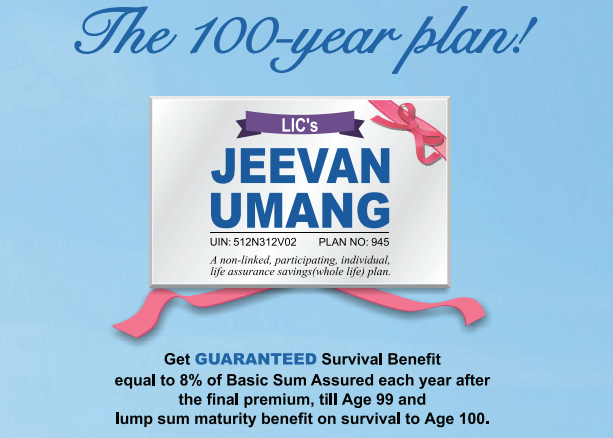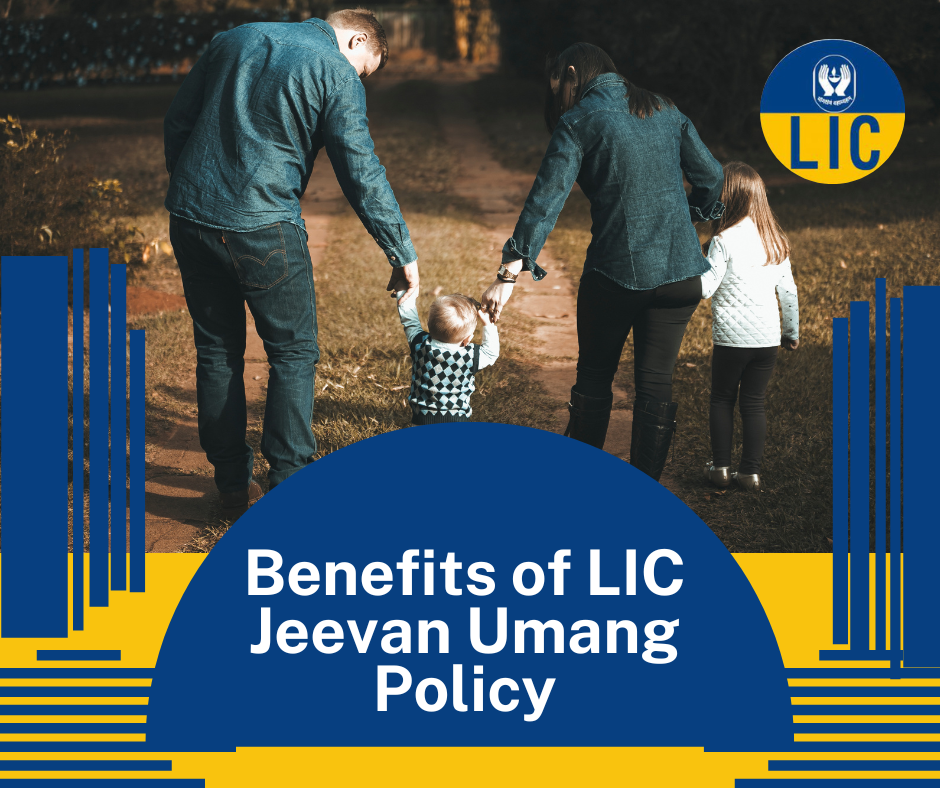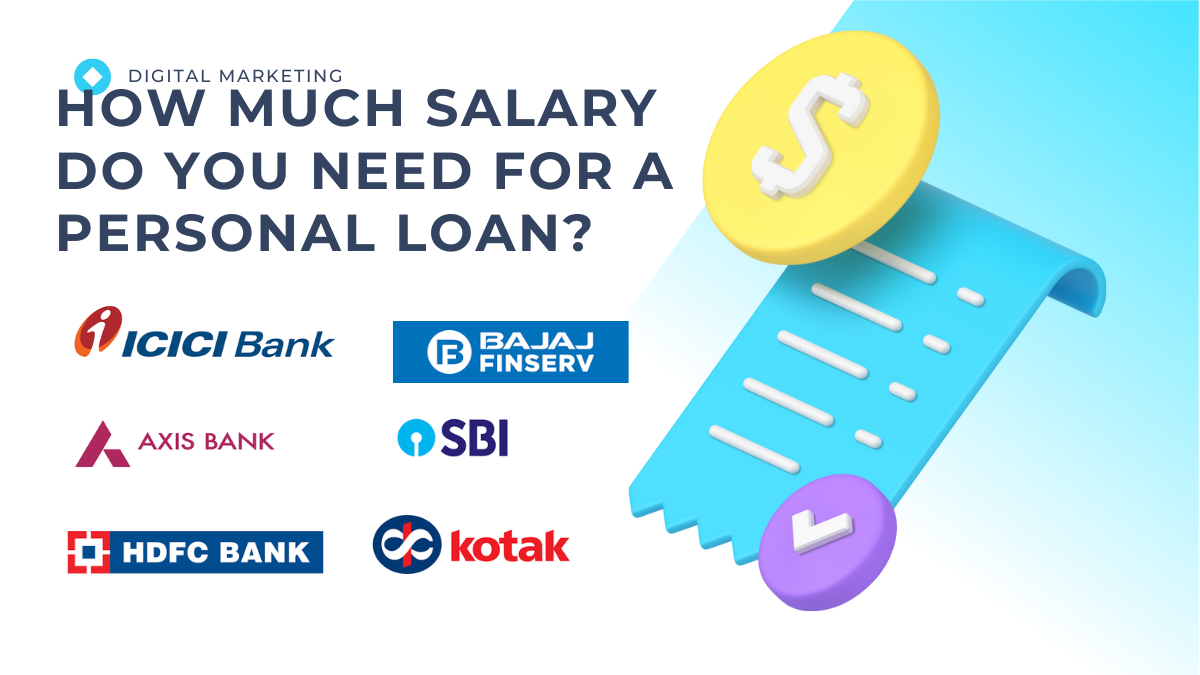Are you one of those people who wait until the last minute to purchase life insurance? Well, you’re not alone. Many of us tend to procrastinate when it comes to life insurance.
But the truth is, life is unpredictable, and having a life insurance policy can provide financial security for your loved ones in case of an unfortunate event.
LIC Jeevan Umang Plan, a life insurance plan that promises to keep you and your family financially secure. Now, before you roll your eyes and click away, let me tell you, this plan is worth considering. With its unique features and benefits, it stands out from the crowd of ordinary life insurance plans.
So, what makes LIC Jeevan Umang so special? Let’s find out!
Why LIC Jeevan Umang?
Let’s be honest; choosing the right life insurance plan can be a daunting task. With so many options available, it’s easy to get lost in the sea of insurance policies.
So, what sets it apart from other life insurance plans?
Lifetime Coverage
For starters, it provides a lifetime coverage option that can ensure your family’s financial stability even after your demise.
Regular Income
And unlike other plans that offer a lump-sum payout, LIC Jeevan Umang provides a regular income stream to your family.
Best for Investment Purpose
But wait, there’s more! With guaranteed additions and loyalty additions, this plan ensures that your policy’s value grows with time, making it an ideal investment for the long term.
Features and benefits of LIC Jeevan Umang Policy

What’s better than having financial security? Having financial security with added benefits, of course! LIC Jeevan Umang Plan offers several benefits that can make your life easier.
Let’s Talk about all the benefits in details:
Death Benefit:
If you happen to die during the policy’s term, (let’s hope that doesn’t happen), the Death Benefit is provided to your nominee, provided the policy is in-force, meaning all premiums have been paid on time.
There are two scenarios here – either you meet your maker before the commencement of risk or after.
If you’re unfortunate enough to die before the commencement of risk, then your nominee gets a return of premium(s) paid without interest.
But if you pass away after the commencement of risk, then the Death Benefit is defined as the sum of “Sum Assured on Death” and vested Simple Reversionary Bonuses (as mentioned in (d) below) and Final Additional bonus, if any.
Wait, there’s more. The “Sum Assured on Death” is defined as the higher of 7 times the annualized premium or Basic Sum Assured.
And, the Death Benefit shall not be less than 105% of the total premiums paid up to the date of death. So, if you were paying your premiums on time (good job!), your nominee is guaranteed a handsome payout.

Survival Benefit:
If you manage to outlive the policy term, congratulations! A survival benefit equal to 8% of Basic Sum Assured shall be payable each year provided all due premiums have been paid.
So, if you had taken this policy for 25 years with a Basic Sum Assured of Rs. 10 lakhs, you’ll get a survival benefit of Rs. 80,000 each year for 25 years. That’s a whopping Rs. 20 lakhs over the entire policy term. Who says surviving doesn’t pay?
Maturity Benefit:
If you’re lucky enough to survive the entire policy term (fingers crossed!), then the “Sum Assured on Maturity” along with vested Simple Reversionary Bonuses and Final Additional bonus, if any, shall be payable.
The “Sum Assured on Maturity” is equal to Basic Sum Assured.
So, if you had taken this policy for 25 years with a Basic Sum Assured of Rs. 10 lakhs, you’ll get a maturity benefit of Rs. 10 lakhs plus any bonuses accrued during the policy term. That’s a sweet deal!
Participation in profits:
Now, here’s where things get interesting. During the premium paying term, policies shall be eligible to receive Simple Reversionary Bonuses declared as per the experience of the Corporation during the premium paying term, provided the policy is in-force.
Final Additional Bonus may also be declared under an in-force policy in the year when such policy results into a claim by death.
But, if the premiums are not paid on time, the policy shall cease to participate in future profits during the premium paying term.
And after the premium paying term, under a fully paid-up policy (where all premiums payable during the term of the policy are paid) or in a paid-up policy with Maturity Paid-up Sum Assured of Rs. 2 lakhs or more,
the terms for participation of profits after the premium paying term may be in a different form and on a differential scale depending on the Corporation’s experience under this plan at that time.
Eligibility Criteria of LIC Jeevan Umang Plan
Now that you know why LIC Jeevan Umang Plan is the way to go, let’s look at the eligibility criteria.
- To enroll in this plan, you must be between 90 days to 55 years of age.
- The minimum sum assured is INR 2,00,000, and there is no maximum limit.
- You can choose a premium payment term of 15, 20, 25, or 30 years.
But before you sign up for the plan, make sure to read the fine print and understand the terms and conditions.
Now that you know the eligibility criteria and benefits of the plan, let’s dive into
How LIC Jeevan Umang Plan works ?

Meet Karan, a 30-year-old male who is interested in buying this policy.
- Karan wants coverage of Rs. 10,00,000 and
- a policy term of 70 years.
- However, he only wants to pay premiums for the first 20 years of the policy term.
Karan finds out that his annual premium will be Rs. 54,036, which includes taxes. And let’s not forget about the taxes! The GST of 4.5% will be levied on the first-year premiums, while 2.25% will be charged on premiums payable in the subsequent years.
Now, let’s see what benefits Karan or his family will be entitled to in different scenarios:
If Karan dies within the premium paying term:
It’s not something we like to think about, but accidents happen. In the unfortunate event of Karan’s death within the premium paying term, his family will receive the death benefit.
The death benefit will be either 7 times the annual premium (Rs. 3,78,252) or the Basic Sum Assured (Rs. 10,00,000) plus applicable bonuses. Since the latter is higher, LIC will pay this amount.
If Karan dies 10 years after the premium paying term ends :
Phew! Karan made it through the premium paying term. But let’s say he passes away 10 years later.
In that case, he would have received annual survival benefits for 10 years, which is equal to 8% of the BSA.
That means he would have received Rs. 80,000 annually for 10 years until his death. On his death, Karan’s family can claim the death benefit amount, which will be equal to (Rs. 10,00,000 + bonuses).
If Karan survives the policy term of 70 years:
Congratulations, Karan! You made it to the end of the policy term. In this case, Karan will receive the Basic Sum Assured (Rs. 10,00,000) plus applicable bonuses as the maturity benefit.
He will also have received annual survival benefits starting from the end of the premium paying term until the end of the policy term.
Each year of survival entitles Karan to 8% of the BSA, which is equal to Rs. 80,000 per year in this case.
So, there you have it! A step-by-step explanation of how LIC Jeevan Umang works, along with a sample illustration of premiums.
Now, all that’s left to do is to decide if this plan is right for you. Just remember to read the fine print, and don’t forget to pay your premiums on time, unless you want to risk losing out on those survival benefits.
Riders Benefits Of LIC Jeevan Umang Policy
There are five riders you can choose from, but unfortunately, you can only pick four. Here are the options:
Accidental Death and Disability Benefit Rider
First up is the Accidental Death and Disability Benefit Rider. You can choose to add this rider to your policy as long as your premium-paying term is at least five years.
If you meet the requirements and you happen to die in an accident, your loved ones will receive a lump sum payment.
If you survive the accident but suffer from a disability, you’ll receive equal monthly payments over ten years.
The good news? You won’t have to pay any future premiums for the policy. How’s that for a silver lining?
Accident Benefit Rider
Next is the Accident Benefit Rider. This one is similar to the previous rider but with a twist.
You can only avail this rider during the premium-paying term, and your beneficiaries will receive a lump sum payment only if you die in an accident.
New Term Assurance Rider
Moving on to the New Term Assurance Rider, which is only available when you purchase the policy. If you opt for this rider, your loved ones will receive a payment if you pass away during the term.
The term is 35 years or until you reach the age of 75, whichever comes first.
New Critical Illness Benefit Rider
The fourth rider is the New Critical Illness Benefit Rider. If you are diagnosed with any of the 15 critical illnesses covered by this rider, you’ll receive a payment.
Again, the term is 35 years or until you reach the age of 75, whichever comes first.
Premium Waiver Benefit Rider
Lastly, we have the Premium Waiver Benefit Rider. This rider is available if the proposer of the policy is still a minor.
If the proposer passes away, the policy’s premiums will be waived. However, if the premium-paying term is longer than the rider term, the policyholder will need to pay the remaining premiums.
In addition to these riders, you also have the option to receive your death benefit in installments. If you choose this option, you can receive your payment in 5, 10, or 15-year intervals instead of a lump sum payment.
LIC Jeevan Umang Tax Implications
The good news is that this plan comes with some pretty sweet tax benefits. For starters, the premiums you pay towards this plan are tax-deductible under Section 80C of the Income Tax Act.
So not only are you securing your future, but you’re also getting a tax break – win-win!
And that’s not all. When the policy matures, the sum assured and any bonus that you receive are also tax-free under Section 10(10D) of the Income Tax Act.
So basically, you’re making a smart investment while also keeping the taxman at bay. Can life get any better than this?
LIC Jeevan Umang-Policy Exclusions
Listen, I hate to be the bearer of bad news, but there are some things that the LIC Jeevan Umang plan won’t cover.
- First off, if you happen to die within the first year of the policy, the plan won’t pay out the sum assured. Harsh, I know, but that’s just the way it is.
- Secondly, if you happen to die due to suicide, the plan won’t cover that either. Again, I know this sounds grim, but it’s important to be aware of these exclusions so that you can make an informed decision about your policy.
- Lastly, if you happen to miss a premium payment, the plan might lapse.
But don’t panic just yet – you can always revive the policy by paying the missed premium within a specified time frame.
Other Benefits of LIC Jeevan Umang Plan
Policy Loan:
- Policyholders can avail a loan during the policy term, provided at least two full years’ premiums have been paid.
- Maximum loan amount is 90% of the surrender value for in-force policies and 80% for paid-up policies.
- The interest rate to be charged for policy loan will be determined by the corporation.
Taxes:
- The policyholder is required to pay the applicable taxes on premiums (for base policy and rider(s), if any), as per the prevailing rates.
- The amount of tax paid shall not be considered for the calculation of benefits payable under the plan.
- Policyholders should consult with their tax advisor regarding the income tax benefits/implications on premiums paid and benefits payable under the plan.
Free Look Period:
- If the policyholder is not satisfied with the “Terms and Conditions” of the policy, the policy may be returned to the Corporation within 15 days from the date of receipt of the policy bond stating the reasons of objections.
- On receipt of the same, the Corporation shall cancel the policy and return the amount of premium deposited after deducting the proportionate risk premium, expenses incurred on medical examination, special reports, if any, and stamp duty charges.
Surrender:
- The policy can be surrendered at any time provided two full years’ premiums have been paid.
- On surrender, the Corporation shall pay the Surrender Value equal to higher of Guaranteed Surrender Value and Special Surrender Value.
- Guaranteed Surrender Value payable during the policy term shall be equal to the total premiums paid (excluding extra premiums, taxes, and premiums for riders, if opted for) multiplied by the Guaranteed Surrender Value factor applicable to total premiums paid.
Conclusion
And that brings us to the end of our journey through the exciting world of LIC Jeevan Umang. To recap, we’ve learned that this plan offers a range of benefits such as guaranteed payouts, death benefits, and survival benefits.
We’ve also covered the tax benefits that come with the plan, which should come as a relief to all you tax-paying folks out there.
Of course, it’s important to note the policy exclusions and limitations as well. You don’t want to get too carried away with your dreams of guaranteed payouts without fully understanding what you’re getting into.
Our recommendation is to seriously consider purchasing the LIC Jeevan Umang Plan. It’s a solid investment that provides a variety of benefits and tax savings, making it an attractive option for those looking to secure their financial future.
FAQs
What is LIC Jeevan Umang Plan?
LIC Jeevan Umang is a traditional non-linked, with-profits, whole life assurance plan, which offers regular income and lump sum payment options.
What is the eligibility criteria to apply for LIC Jeevan Umang Plan?
The minimum entry age is 90 days and the maximum entry age is 55 years. The policy term is 100 years minus age at entry. The sum assured can be a minimum of Rs. 2,00,000 with no upper limit. The premium-paying term can be 15 years, 20 years, 25 years, or 30 years. The age at the end of the premium-paying term should be between 30 years and 70 years.
What are the premium payment options available under LIC Jeevan Umang Plan?
The premium payment options available are yearly, half-yearly, quarterly, and monthly modes.
Can I take a loan against LIC Jeevan Umang Plan?
Yes, a policy loan can be availed during the policy term provided at least two full years’ premiums have been paid.
What is the maximum loan amount that can be availed against the Jeevan Umang policy?
For in-force policies, the maximum loan amount can be up to 90% of the surrender value, and for paid-up policies, it can be up to 80% of the surrender value.
Is there any tax benefit available under LIC Jeevan Umang Plan?
Yes, the policyholder is eligible for tax benefits under Section 80C and Section 10(10D) of the Income Tax Act, 1961.
What is the free look period of LIC Jeevan Umang Plan?
The policy can be returned to the Corporation within 15 days from the date of receipt of the policy bond stating the reasons of objections.
What is the surrender value of LIC Jeevan Umang Plan?
The policy can be surrendered at any time provided two full years’ premiums have been paid. The surrender value will be equal to the higher of Guaranteed Surrender Value and Special Surrender Value.
What is the maximum age limit for maturity under LIC Jeevan Umang Plan?
The maturity age is 100 years.
Can riders be added to the LIC Jeevan Umang Plan?
Yes, riders such as LIC’s Accidental Death and Disability Benefit Rider, LIC’s New Term Assurance Rider, LIC’s New Critical Illness Benefit Rider can be added to the plan at an additional cost.







